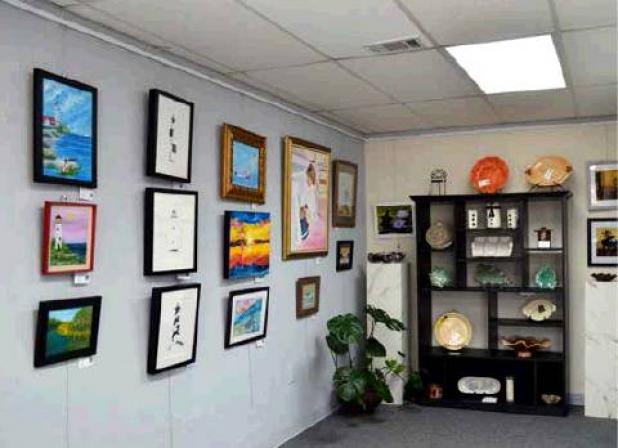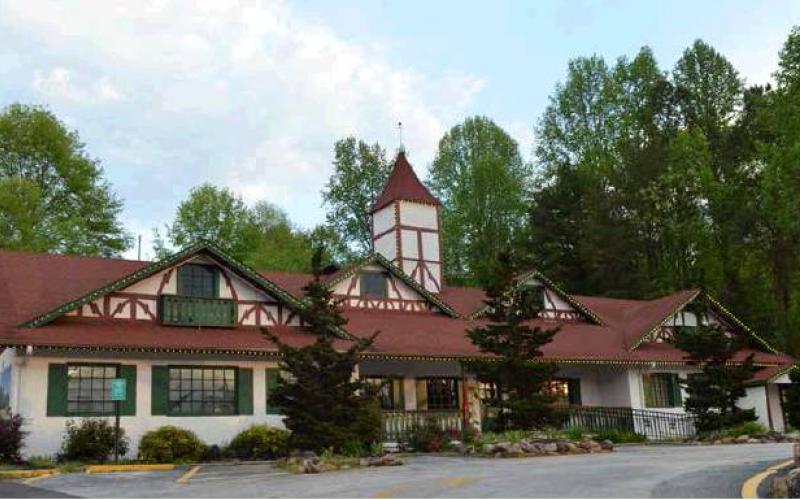On Helen’s Chattahoochee Strasse sits a building filled with history – both literally and figuratively. It’s the Helen Arts & Heritage Center (HAHC), the former city hall that now hosts a trove of items documenting the city’s heritage.
On Helen’s Chattahoochee Strasse sits a building filled with history – both literally and figuratively.
It’s the Helen Arts & Heritage Center (HAHC), the former city hall that now hosts a trove of items documenting the city’s heritage.
HAHC history committee member David Greear said there was a desire to have the history of the town displayed, following the creation of the arts center in 2008, leading to the formation of a history wing. One of the main attractions there is the John Kollock exhibit, which was created in honor of the late artist who helped create the design used to transform Helen from a lumber mill town into the Bavarian-themed village it is known as today.

“This room is kind of a tribute to John Kollock. When he passed away, they wanted to recognize his contribution to the alpine theme in Helen,” Greear said. “This part (John Kollock exhibit) was added more recently, about five years ago.”
The John Kollock exhibit features some of his sketches and paintings, along with a model of his studio. Visitors can also watch a short video about the town that was narrated by Kollock himself.
“We wanted to show the little vignette of his studio where he used to create all these sketches and paintings, and the view looking out his studio window (is the actual view) in Clarkesville,” said Carol Powell, another member of the history committee. “Mrs. [Nancy] Kollock was very gracious in allowing us to be the only history center that would display a tribute to him as well.”
“John was not only instrumental in designing Helen, but in the whole history of the valley,” said history committee member Emory Jones. “Each one of his paintings is like a history book. He did research on it. John was just so instrumental. It was just fitting that we had something that represented him and what he had done.”
There are sketches on the wall that show what Kollock envisioned for the town, but not everything turned out exactly like planned.
“It’s interesting to look at some of these images and see how they look today,” Greear said.” A lot of these places do look how John Kollock envisioned, some don’t. Like the Helendorf had an ice-skating rink and that never developed.”
In deciding what to put into the rest of the museum’s history wing, Powell said they wanted a theme of going forward in time.
“Starting with pre-contact, the Indian mound, that’s a 10,000-yearold area out there. They’ve dug the bones out and found bones out there, so it was a burial mound,” Powell said. “Then, we wanted to show it coming up through time, and one of John Kollock’s paintings depicted a little Indian village around the mound, so one of our members did the diorama for us. As we move forward in time, there’s the settlers that came in the 1800s, the finding of gold, the timber companies came, in the incorporation of Helen and then, of course, during the 1930s and ’40s it was growing and we’re trying to depict the logging industry. The Wilkinses brought in the Wilco Argyle Sock Factory, and then in 1969, a group of businessmen formed the idea for an alpine village, and most especially John Kollock was instrumental in depicting how it would look.”
There are several rooms dedicated to the history of the town. They feature photographs, books, old newspaper clippings and more talking about the city. There are also photos of Helen before the change to the alpine village occurred in 1969.
Besides history rooms, the HAHC also has a gallery featuring local artists’ works, such as paintings, carvings and more. The center also hosts different art classes and workshops throughout the year.
“I don’t know any other place that has a per capita number of artists and talented people,” Jones said. “There’s just so much talent around here, they needed a place to kind of centralize their work and show off their work. It’s a natural fit for Helen.”
The building itself has its own part in the city’s heritage. Around 1970, the building became Helen City Hall, and housed the fire station, the city jail, the library and the Helen Convention and Visitors Bureau, Greear said. In 2004, city hall moved to its current location at 25 Alpenrosen Strasse.
Powell said the center is always looking for volunteers and will accept historical donations from any time period, especially the early years of Helen before it became an alpine village.

